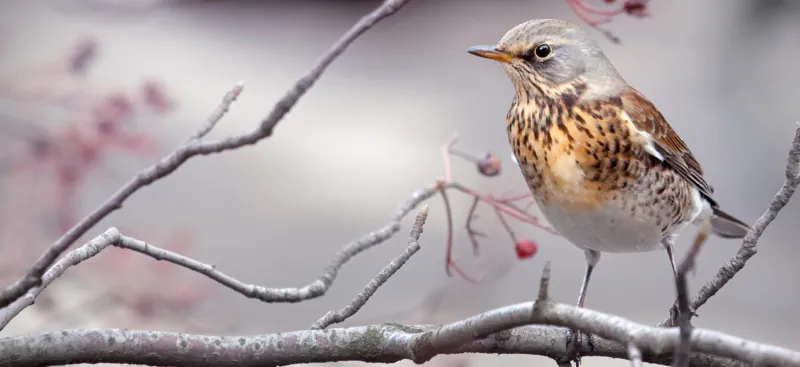Migration: The UK's Winter Visitors
Migration is a natural phenomenon observed across the animal kingdom, and birds are no exception. In the United Kingdom, winter visitors bring with them a sense of wonder and fascination for both seasoned birdwatchers and curious onlookers. These avian travellers embark on long and arduous journeys, seeking warmer climates and bountiful food sources during the colder months. This blog post delves into the intriguing world of winter migration in the UK, shedding light on the species that grace our shores.
Waxwing
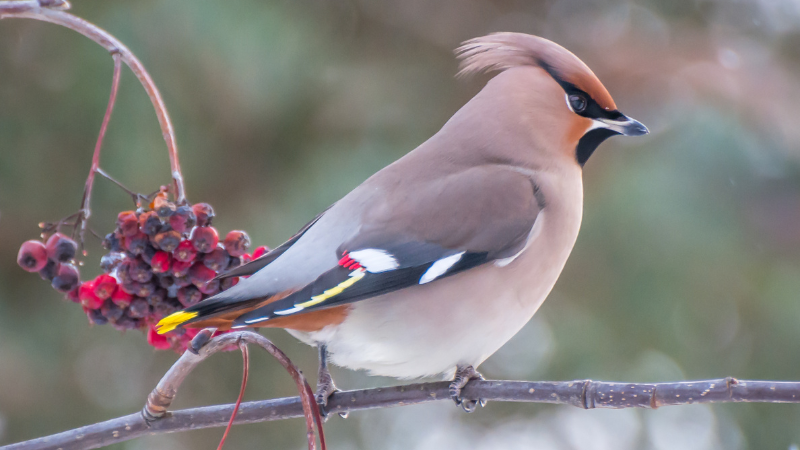
The waxwing is a medium-sized, elegant bird known for its striking appearance. It features soft plumage with subtle shades of brown, grey, and pale yellow, complemented by distinctive black markings on its face, wings, and tail. One of its most notable features is the vivid red waxy tips on its secondary wing feathers, which lend a unique and eye-catching charm. With a sleek crest atop its head, the waxwing exudes an air of regal elegance.
Waxwings migrate from their breeding grounds in Fennoscandia and western Russia to the UK at the start of October. They are drawn to the east coast from Scotland to East Anglia, but birds will eventually move inland, where they forage on berries and fruits, creating delightful spectacles for birdwatchers across the country. Their arrival is a sure sign that winter has set in, adding a touch of colour and charm to the urban landscapes of the UK. Witnessing these beautiful birds is a treat for nature enthusiasts and a reminder of the wonders of migration.
Arctic Tern
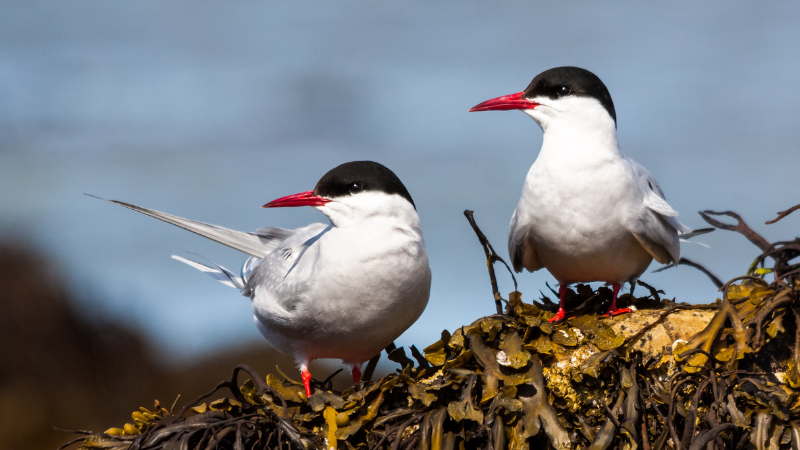
One of the most awe-inspiring migrations witnessed in the UK is that of the Arctic Tern. With striking white plumage, a black cap on its head, and slender, pointed wings, it exudes elegance.
These birds breed in the Arctic regions but come winter, they embark on an astonishing migration to the Antarctic and back. This migration covers a distance of over 22,000 miles (the Earth's circumference is 25,000 miles), making it one of the longest journeys undertaken by any bird. During their UK stopovers, arctic terns can be spotted along coastal areas, feeding on small fish and invertebrates. Their presence serves as a testament to the marvels of avian navigation and endurance, captivating the imagination of birdwatchers and nature enthusiasts alike.
Redwings
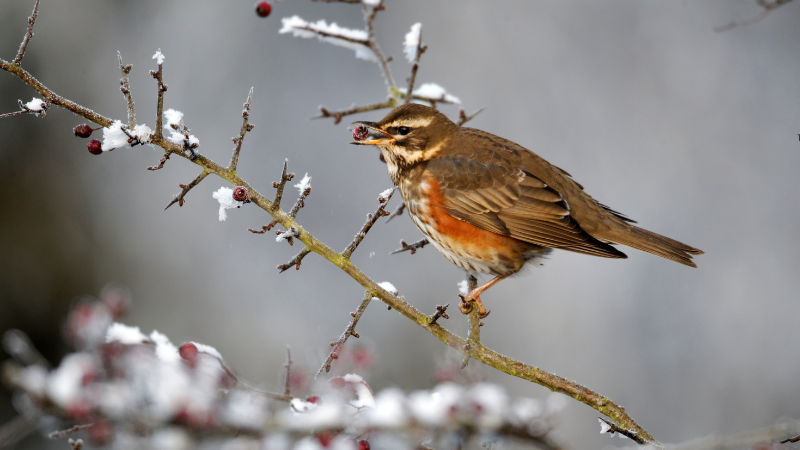
Redwings are small to medium-sized thrush known for their distinctive reddish-brown flanks and underwings. With a creamy-white stripe above the eyes and a bold, rusty-red patch beneath them, it boasts striking markings. These birds are often seen foraging insects, worms, and berries in woodlands, gardens, and fields.
Native to Scandinavia and northern Europe, most redwings migrate to the UK in October, providing birdwatchers with a delightful sight and a sweet, melodious song. Their arrival is a sure sign that winter has set in, adding a touch of colour and song to the colder months.
Fieldfare
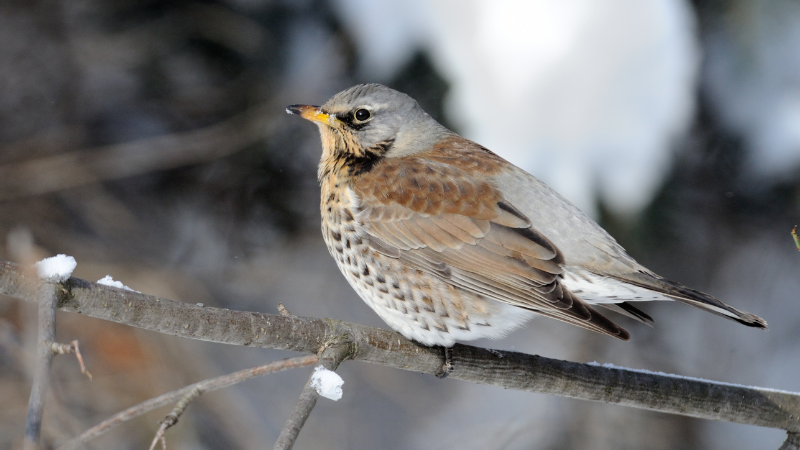
The fieldfare is a robust and distinctive bird, primarily recognised by its slate-blue-grey plumage and striking chestnut-brown patch on its flanks. Fieldfares are easily identifiable with a white belly and a distinctive black tail.
Fieldfares migrate to the UK in October from Fennoscandia, western Russia and eastern Europe. These robust thrushes are often seen in large flocks, foraging for berries and insects in fields, hedgerows, and gardens. They are known for their sharp, chattering calls, adding an auditory dimension to their presence.
Brambling
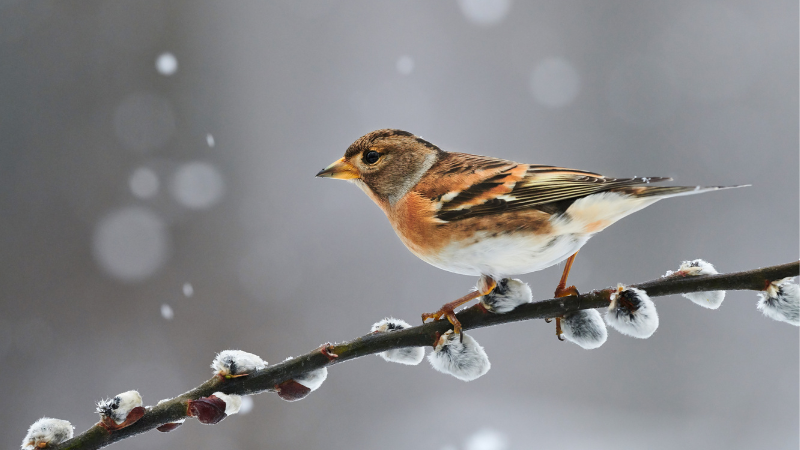
Brambling birds are small and striking, known for their vibrant orange and black markings. During the breeding season, the male boasts a rich black head, throat, and breast, complemented by a bright orange patch on its shoulders and chest. The female and winter males have more subdued plumage but still exhibit distinctive orange markings.
Bramblings are one of the early arrivals of winter visitors, as they touch down in the UK as early as September after their long journey from Scandinavia and Siberia. They often join mixed flocks of finches and can be found in woodlands, gardens, and farmland, where they forage for seeds and insects.
Whooper Swan
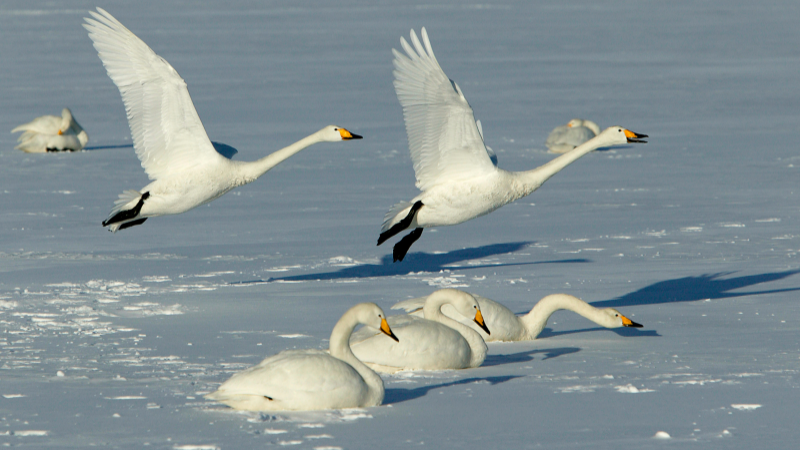
The Whooper Swan is a majestic bird known for its striking appearance and haunting calls. These large, white swans have long, graceful necks and distinctive yellow and black beaks. Their calls, reminiscent of a trumpet-like bugle, are a characteristic feature of their migration.
Whooper Swans migrate from their breeding grounds in Iceland, arriving in the UK in the winter months. They seek refuge in wetlands, lakes, and estuaries, where they feed on aquatic plants and graze on nearby fields. Their arrival in October is a much-anticipated event, signifying the onset of winter and adding a touch of elegance to the UK's waterways.
The arrival of winter visitors in the UK is a testament to the resilience and adaptability of nature. Witnessing these migratory marvels in action is a reminder of the interconnectedness of our planet's ecosystems. As we admire the beauty of these birds, let us also remember our responsibility to protect their habitats and ensure they continue to grace our shores for generations to come. Winter migration is not only a spectacle to behold but also a call to action for conservation and preservation.

